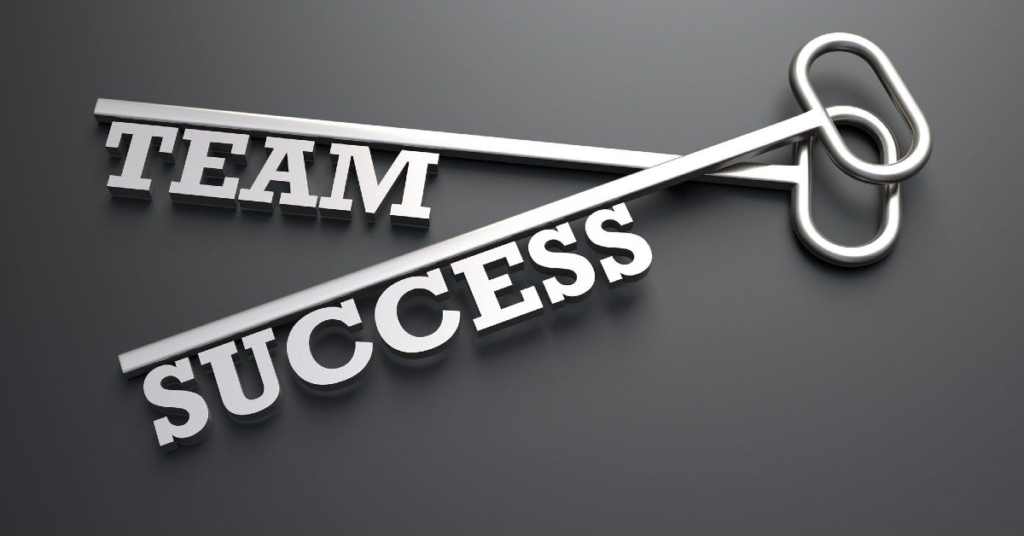
Teamwork makes the dream work, but having no clear functions and responsibilities turns your dream work into a nightmare. Clear roles and responsibilities are essential to ensure everything goes smoothly within your team and organisation. Overall, it enhances the productivity of your team members and helps each of you to focus on the tasks assigned to you.
Now, what exactly is team roles and responsibilities? Isn't that something that has already been defined in your job title? Well, not exactly. The role of a person in a team indicates the areas of specialisation in your division. You might be a marketing executive, but your expertise is in writing and not designing. And typically, your responsibilities and functions are defined by your expertise.
We're sure you couldn't wait to know the tips and tricks in helping you to define each person's roles and responsibilities. Still, more importantly, you need to understand the advantages of how clear roles and responsibilities may help you in your organisation.

When everyone understands their roles in the team and what's expected of them, it lets them know the traits and skills they need to work on. This undoubtedly will increase the overall of your team productivity, which increases your team success rate in the fullness of time.
Everyone knows that good communication is the bridge between confusion and clarity. It is one of the most important skills the workforces need to ensure the team's growth. Communication defines how one can frequently communicate with their team members with ease while working on a project. This couldn't be done when one member doesn't know the roles and responsibilities of the other members.
When there is communication, there is collaboration, and having collaboration builds up the skills and knowledge within the team. This will then further help each member to understand their responsibilities further. Collaboration comes naturally when each team member knows clearly about their roles. Ultimately, this will form an excellent organisational approach towards working things out and problem-solving within your team!
Read more: Ultimate Guide To Problem Solving Skills: What Are They And How To Improve Them
Highly efficient team members will always be appreciated in their team. As a result of that, the morale of your team members will be highly increased, which will eventually lead to building them into confident individuals. This will not only motivate them to do better for themselves, but it will also increase their momentum for work.
Employees who clearly understand their roles and responsibilities often contribute a lot to their team's success. They know clearly about their duties, deadlines, and what tools and skills to learn to get the job done perfectly.

Now on to the interesting part. How exactly can you define the team's roles and responsibilities for each individual in your team?
The first thing you should do as a leader before assigning specific tasks to your team members is to recognise their strengths and weaknesses. Knowing their strengths and weaknesses helps in setting suitable tasks for your employees. When the tasks assigned excite them, it will definitely highly motivate them to complete the tasks!
Very much like your team members, your company has to have a clear goal as well. A good company's mission will guide you and your team members in walking towards common goals. Even though everyone's roles and responsibilities are different, having common goals lets them know what needs to be done and how their roles can contribute to the company's mission.
Making a list of tasks you need to get done gives you an idea of how many things you're able to handle. By doing so, you get to answer questions like "Which projects to prioritise?", "Were the past projects successful?", and "What can be improved on the previous projects?" Answering these sorts of questions helps you and your team members work together, utilising every member's expertise in achieving common goals.
As a leader, it's your responsibility to understand your team member's personal goals and guide them to achieve those goals. Often enough, your team members' personal goals align closely with the roles they're playing at your company. A good leader will set measurable and attainable goals for their employees and supervise them in terms of performance in order to enhance their skills. Not only would your team members be able to complete the tasks with ease now, but they're also more skillful in carrying out the responsibilities handed to them.
It's crucial to take note of each employee's job description before you have your duties planned. Employees should receive tasks that are in line with what they're hired for. You shouldn't expect a writer to be good at designing and vice versa. Not to mention, it's very important for you to take their personal goals into consideration when giving them the tasks. And if you combine them both together, you'll be getting yourself a formula in assigning people the right roles and responsibilities.
Again, communication is the key to teamwork. As a leader, you should make sure that each team member is aware of what is to be expected from them. However, communication shouldn't be a one-way thing. It's good to ask for feedback from your employees regarding the responsibilities given to them. It helps create a functional team, but it's also heartwarming for the employees to know that you care about their thoughts and opinions.
When the responsibilities and roles are assigned to your employees, make sure that they agree with it. Don't try to force a role on someone who doesn't want it. Nothing good can come from using force. Your employees will probably do the bare minimums when they're given responsibilities that they don't agree with, or worse, they might resent it so much that it disrupts the flow of your work.

We all know by now that each team member plays a vital role in the team. Some team members are more creative in terms of ideas, while others are good with hands-on tasks. The main point is that all employees have their core values that help bind the team together. A good team member will play the role of being an active listener and participator and carry out their responsibilities in completing all the tasks and assignments given.
A leader is different from a boss, and that's a common saying that we've all heard before. The team leader's primary role is to guide the team in the right direction. Even though the team leader is responsible for giving out the tasks, an effective team leader will give their all in supporting and supervising their employees when they need help and resolving any internal communication issues.
In conclusion, the team leaders and their employees are like cogs and springs. If these "parts" are put together, and everyone plays their role, you'll build a well-functioning team. In addition, as long as everyone in the team is organised and clear about their respective roles and responsibilities, you'll undoubtedly be an efficient team accomplishing all your goals in no time.